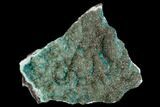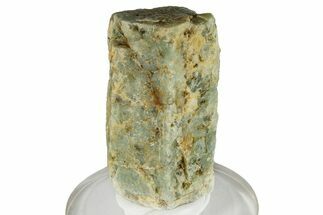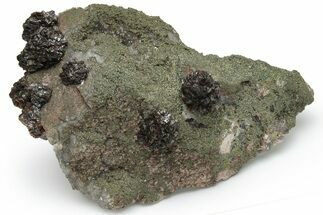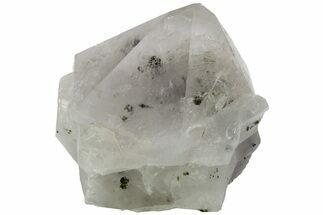This Specimen has been sold.
1.9" Blue-Green Smithsonite Aggregation - Hidden Treasure Mine
This is a botryoidal formation of smithsonite that is coated in an aggregation of druzy smithsonite crystals, collected from the Hidden Treasure Mine in the Ophir district of Utah. This specimen is 1.9" and also contains small blue botryoidal formations of rosasite on one side of the specimen.
Smithsonite forms in earthy botryoidal masses, sometimes forming grape-like structures. It can be found as a secondary mineral in oxidation zones of zinc ore deposits, in some sedimentary deposits, and as an oxidation product of sphalerite. The general chemical formula of smithsonite is ZnCO3, however Fe (iron), Mg (magnesium), Ca (calcium), Cd (cadmium), Cu (copper), and Co (cobalt) can take the place of Zn (zinc). This potential for elemental variation results in smithsonite's wide variety of colors, including blue, green, yellow, orange, pink, purple, brown, gray, white, and colorless.
Rosasite is a secondary mineral that forms in oxidation zones of copper-zinc deposits, generally forming a fibrous botryoidal sphere that can appear vitreous and silky. While typically featuring a blue-green color, colorless specimens are not unheard of. The chemical formula of rosasite is CuZnCO3(OH)2.
SPECIES
Smithsonite & Rosasite
LOCATION
Hidden Treasure Mine, Ophir District, Utah
SIZE
1.9 x 1.5"
CATEGORY
ITEM
#109768
 Reviews
Reviews













